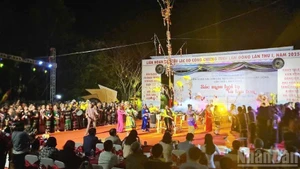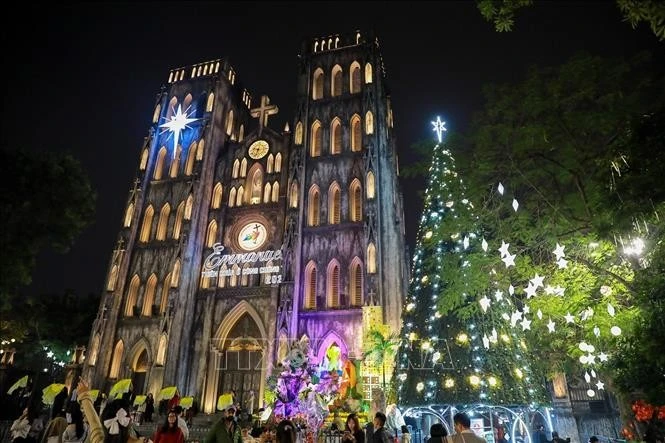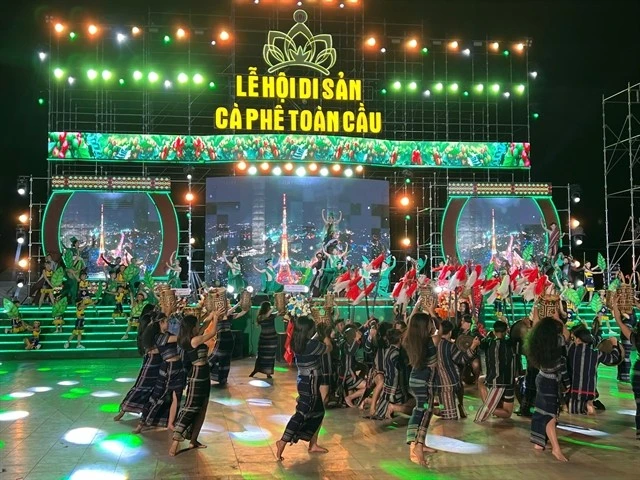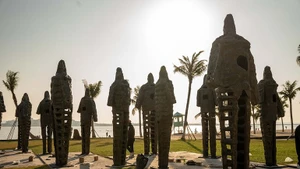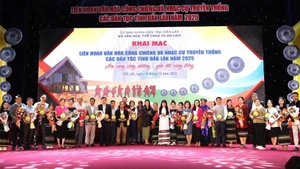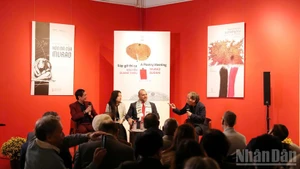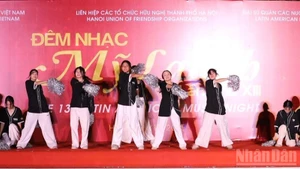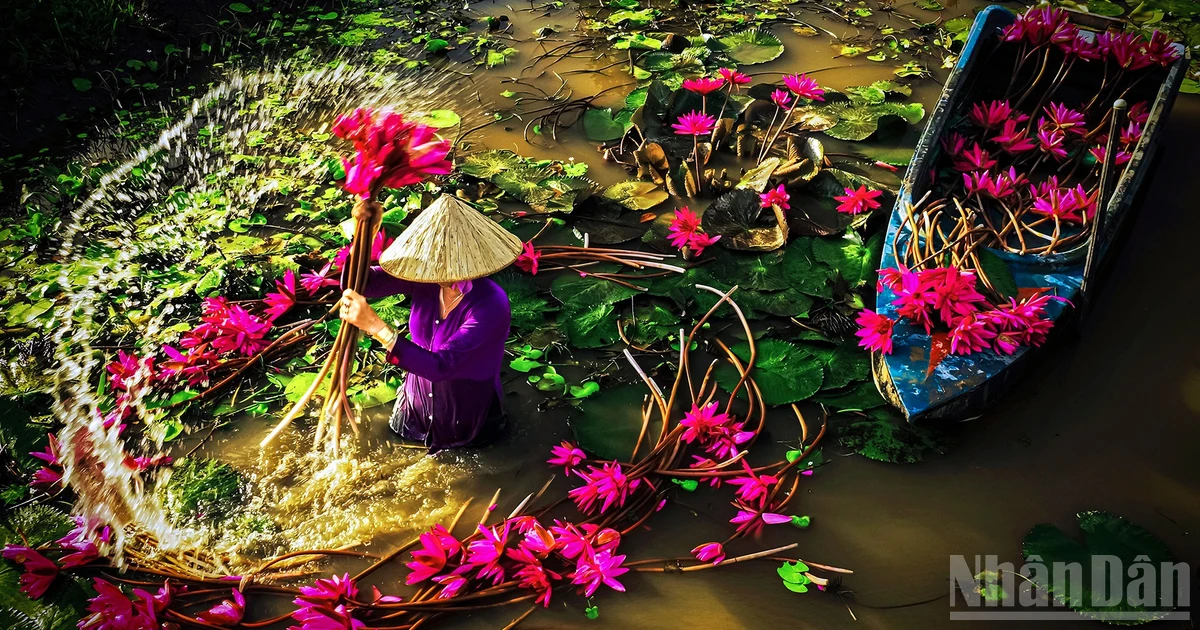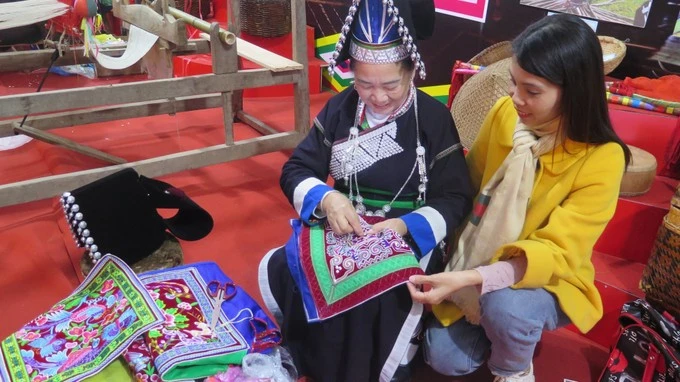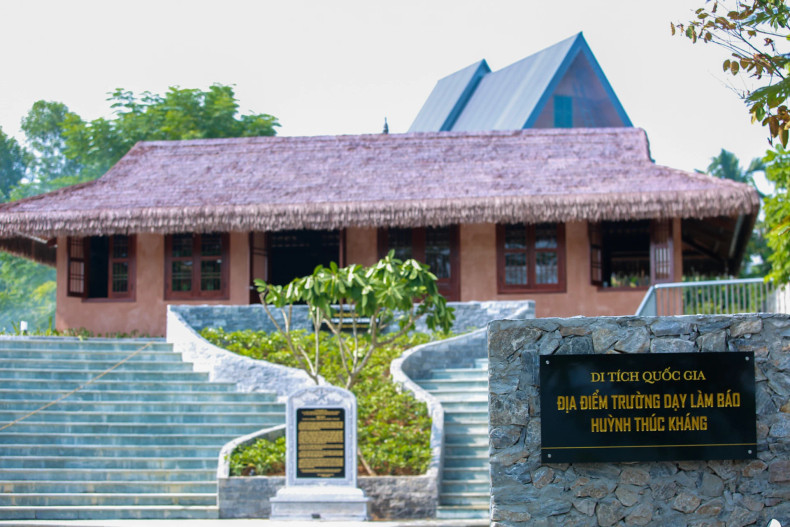 |
| The completed project includes three main areas: the Viet Minh Headquarters House, the 2-storey Press Teaching House and other items. |
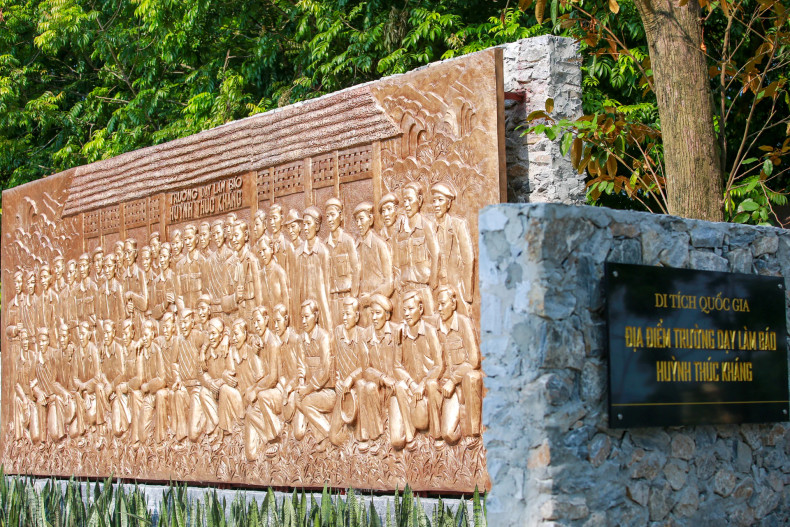 |
| The yard is a space for organising events, highlighted by a relief of 48 portraits of the school's Board of Directors, lecturers and students. |
 |
| The Viet Minh Headquarters House was reconstructed and rebuilt in the traditional stilt house architecture. |
 |
| The first journalism class was recreated at the relic site. |
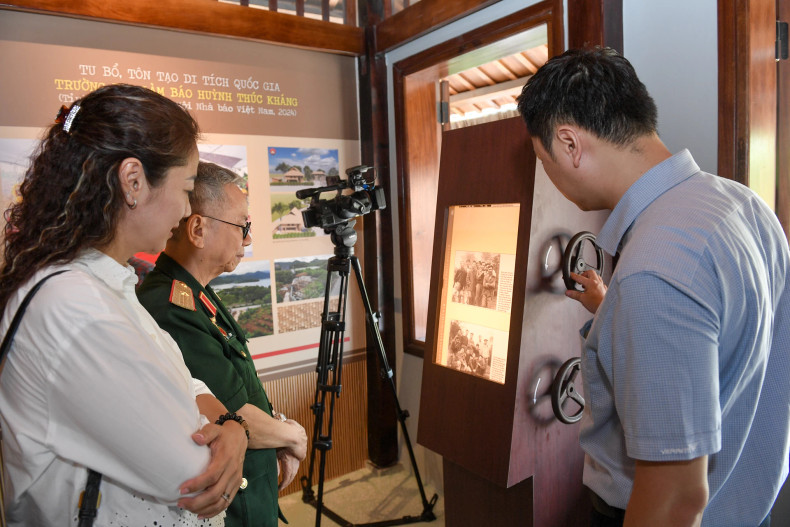 |
| Many valuable documents and artefacts were recreated to serve visitors. |
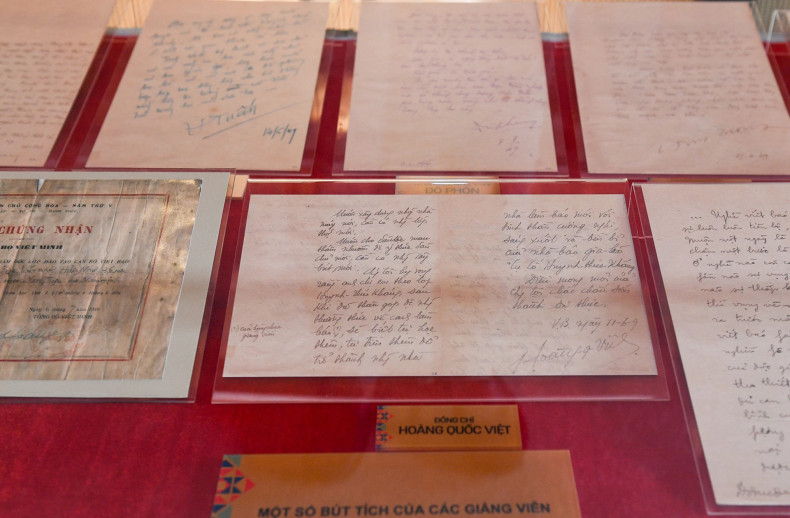 |
| In addition to the spatial graphics system, the Vietnam Press Museum also introduces the writings of lecturers, such as Vo Nguyen Giap, Hoang Quoc Viet, To Huu, Do Duc Duc, Quang Dam, Nguyen Thanh Le, Ha Xuan Truong, Nguyen Van Hai, Tu Giay, and Do Phon. |
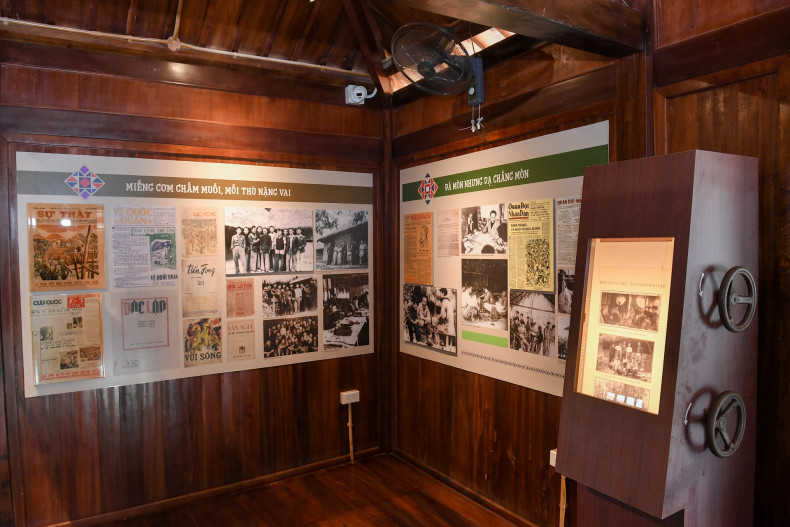 |
| In parallel with the display space, there is a rotating spindle system (based on the idea of continuous rotation of rollers on a newspaper printing machine) to introduce more articles about the school as well as sketches on some newspapers. |
 |
| An image of Uncle Ho next to two letters that he sent to teachers and students of the school. |
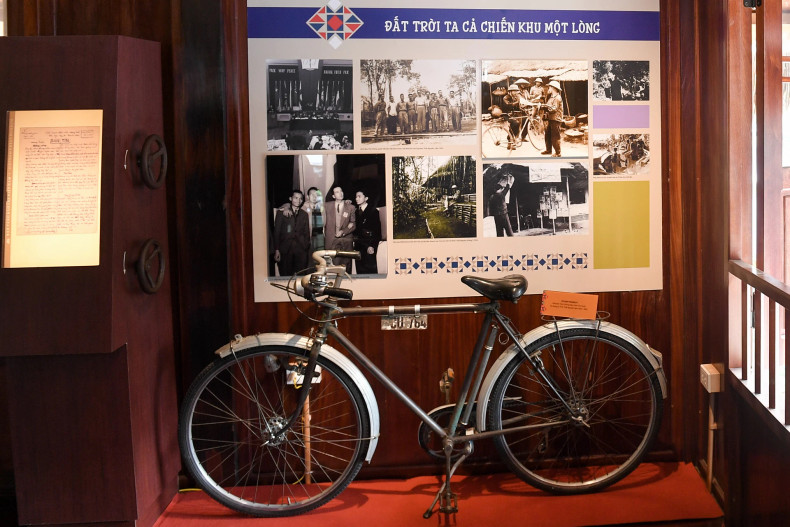 |
| A Peugeot bicycle associated with martyr, journalist Trinh Hoang Dam, former reporter of Cuu Quoc Newspaper. This bicycle was used as a means of revolutionary activities and press propaganda from 1950 to 1952. |
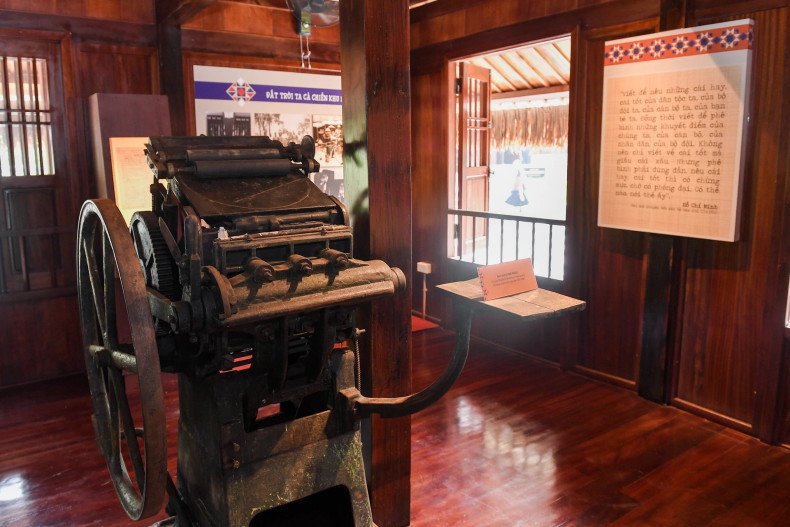 |
| The Platen Press printing machine accompanied and witnessed the historical moments of printing newspapers and documents during the resistance war against French colonialism. |
 |
| Many valuable artefacts are displayed inside the relic. |


